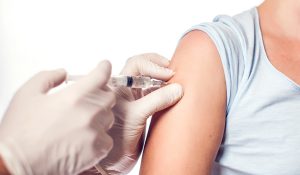
HPV
 HPV is a virus such as herpes or flu virus; It is a virus that can settle in the external genital organs, vagina and cervix and cause cellular changes, which can lead to the development of cancer over time.
HPV is a virus such as herpes or flu virus; It is a virus that can settle in the external genital organs, vagina and cervix and cause cellular changes, which can lead to the development of cancer over time.
HPV – Human Papilloma Virus
HPV is a virus such as herpes or flu virus; It is a virus that can settle in the external genital organ, vagina and cervix and cause cellular changes, which can cause cancer development over time. It can also settle in the mouth-throat cavity, the beginning of the trachea and the tonsils, and may cause disease in these regions. HPV is detected in all patients with cervical cancer. This ratio is much stronger than the lung cancer-causing effect of smoking. There are over 100 types of HPV. Some types (such as 16-18-31-35) cause more pre-cancerous cellular changes and cancer development, and therefore these types are considered high-risk types.
How is it found?
It is mostly transmitted after sexual intercourse with an infected person – infected with this virus. Although the ways of transmission other than sexually are not clear, skin contact is an effective way of transmission. HPV types that settle in the hands and feet are caused by skin contact. Contact of an infected material to the external genitalia may also be a route of transmission. For this reason, common materials (such as razor blades, wax, material container) should not be used during the epilation process to the genital area. In the case of infection of the vagina and cervix, sexual contact with a person carrying the virus is a more rational explanation for transmission. Symptoms may begin to appear within 3-8 months following the incubation period after contact with the virus. It is present in cases where there is no cell disorder in the tissue, although they may be infected with the virus.
HPV Vaccine
There is no effective vaccination therapy for the treatment of an infected person yet. However, a protective vaccine has been developed against some low-risk types (HPV types 6 and 11) and some high-risk types (HPV 16 and 18) in order to protect people who have not yet been infected with this virus. People who are vaccinated will therefore be largely protected against at least these two high-risk types. Vaccination can be started for girls starting from the age of 10 (Ministry approval has not been issued for the use of the vaccine in boys, because studies have not been completed yet. The earlier the vaccination is started (related to the immune system, before the thymus gland regresses), the better the body’s defense system can be stimulated. Therefore, if one day a person encounters the virus types that have been vaccinated, the defense cells immediately destroy the virus.The vaccination is done in 3 doses, at 0-2 and 6. months.The antibody level after vaccination is many times higher than the naturally occurring antibody level after infection. It can provide 95-100% protection for about 5 years. It has not been clarified yet whether a repeat vaccination will be done at the end of the 5th year. The virus vaccine can be given at older ages. The vaccine has been shown to be effective in the age range of 26-45 years.
Can infected people be treated with the vaccine?
It is not possible to treat people infected with the virus by vaccinating them with the available vaccines.
Aldara® cream, which is used locally to increase the defense mechanism only in the external genital area (vulva), after treatment (burning, freezing, removing) the pathologies caused by the virus in the tissue, is successful in reducing the recurrences in this area. If the person’s defense system cannot destroy the virus in time, it means that the person will remain a carrier in terms of that virus type, and in these people, warts and cellular deterioration have started due to the type of virus infected in the cervix, vagina, external genital area, and in men and around the penis. Tissue pathology recurrences can be seen.
Is it absolutely necessary to determine the HPV type before vaccination?
There is no need for HPV type determination before HPV vaccination.
HPV can cause pre-cancerous cellular changes (CIN-VIN – VAIN) in the tissue where it is located. Condylomas (warts) can be seen in the cervix, vagina or vulva of a woman infected with HPV. Warts can be destroyed by burning, freezing or rubbing acid on them. However, it is impossible for a woman to understand the changes that occur in the cervix. These cellular changes can be detected early with a smear taken from the cervix (Pap test) or a colposcopic examination of this area. If cellular changes are confirmed as a result of colposcopy-guided biopsy, that area should be removed. When such a pathology is detected in the cervix, the cervix is removed with a surgical intervention called conization. In the next period, the person should be followed up at regular intervals with smear and colposcopy.